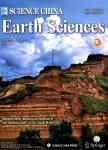An unsplit complex frequency-shifted perfectly matched layer for second-order acoustic wave equations
An unsplit complex frequency-shifted perfectly matched layer for second-order acoustic wave equations作者机构:State Key Laboratory of Petroleum Resources and Prospectingand Unconventional Petroleum Research InstituteChina University of PetroleumBeijing102249China Department of EarthEnvironmental and Planetary SciencesRice UniversityHoustonTexas77005USA
出 版 物:《Science China Earth Sciences》 (中国科学(地球科学英文版))
年 卷 期:2021年第64卷第6期
页 面:992-1004页
核心收录:
学科分类:081803[工学-地质工程] 08[工学] 0818[工学-地质资源与地质工程] 0708[理学-地球物理学] 0704[理学-天文学]
基 金:supported by the National Natural Science Foundation of China(Grant No.41630209)。
主 题:PML CPML Absorbing boundary condition Finite-difference Second-order wave equation Numerical modeling
摘 要:The perfectly matched layer(PML)boundary condition has been proven to be effective for attenuating reflections from model boundaries during wavefield simulation.As such,it has been widely used in time-domain finite-difference wavefield simulations.The conventional PML has poor performance for near grazing incident waves and low-frequency reflections.To overcome these limitations,a more complex frequency-shifted stretch(CSF)function is introduced,which is known as the CFSPML boundary condition and can be implemented in the time domain by a recursive convolution technique(CPML).When implementing the PML technique to second-order wave equations,all the existing methods involve adding auxiliary terms and rewriting the wave equations into new second-order partial differential equations that can be simulated by the finite-difference scheme,which may affect the efficiency of numerical simulation.In this paper,we propose a relatively simple and efficient approach to implement CPML for the second-order equation system,which solves the original wave equations numerically in the stretched coordinate.The spatial derivatives in the stretched coordinate are computed by adding a correction term to the regular derivatives.Once the first-order spatial derivatives are computed,we computed the second-order spatial derivatives in a similar way;therefore,we refer to the method as two-step CPML(TS-CPML).We apply the method to the second-order acoustic wave equation and a coupled second-order pseudo-acoustic TTI wave equation.Our simulations indicate that amplitudes of reflected waves are only about half of those computed with the traditional CPML method,suggesting that the proposed approach has computational advantages and therefore can be widely used for forwarding modeling and seismic imaging.



